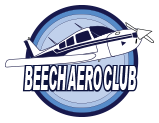Rellihan
Touring the Galaxy
It would be greatly appreciated if some of the BAC Fest attendees, and particularly those who flew in the PFS Sundowner, could weigh in with an article (as a post under this Topic). Our non-attendees would love to see more feedback on the show as a whole; on the results of the PFS video presentation and flights; and on the impressions left about the AECI parts (current gear cushions and Hartwell-style handle, and proposed parts).
While I can ask PFS, I seriously doubt that Robin would be willing to give us a copy of the video for download on the website. There is too much proprietary information there, for the as-yet non-STC'd and non-patented parts.
As noted in the talking points following the Friday night Dinner, BAC is pursuing a PMA on the yoke shaft bushing. Bill Manhein has completed the drawing. What I need now is a bad bushing, which can be destroyed for material analysis. Please let me know if you have one you can send me. I could also use a couple of bad/repairable door braces, if anyone has one or more to spare.
While I can ask PFS, I seriously doubt that Robin would be willing to give us a copy of the video for download on the website. There is too much proprietary information there, for the as-yet non-STC'd and non-patented parts.
As noted in the talking points following the Friday night Dinner, BAC is pursuing a PMA on the yoke shaft bushing. Bill Manhein has completed the drawing. What I need now is a bad bushing, which can be destroyed for material analysis. Please let me know if you have one you can send me. I could also use a couple of bad/repairable door braces, if anyone has one or more to spare.
